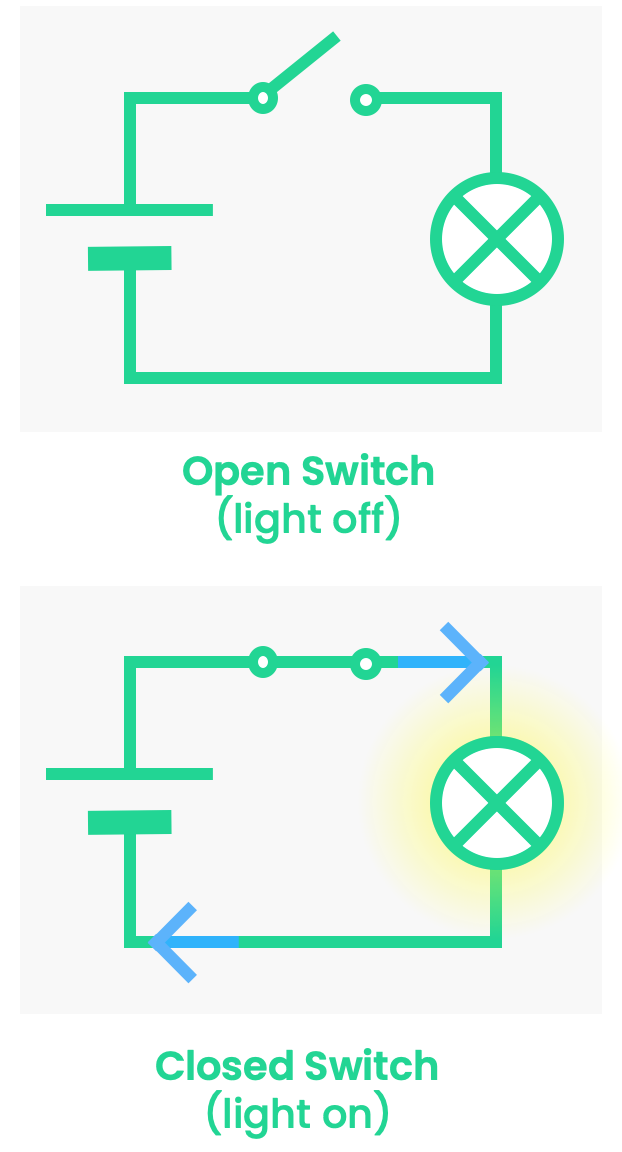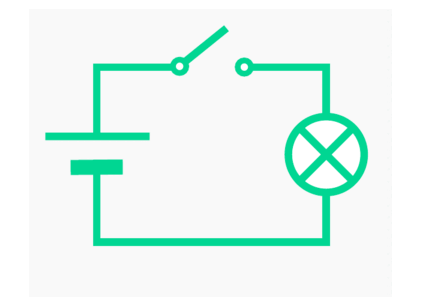Physics
Fox
Summary
- Switches work as you would expect! Current can flow through a closed switch, but not through an open switch.

- If closing a switch creates a complete circuit, then any components (such as light bulbs) within this complete circuit are ‘switched on’.

As useful as electronics are, you don't necessarily want them on all the time.
For example, having a lamp in your room is useful; but you don't want it on when you're trying to sleep! How could we turn it off? We could cut the cable in half, but then we'd have to reattach it again every day.

A much better solution would be to use a switch. A switch is essentially just a small cut in a circuit, that can easily be closed (to form a complete circuit), or opened (to form an incomplete circuit). These positions are indicated on circuit diagrams as follows:

Because current can flow in a complete circuit, we say the circuit is "on" when the switch is closed, and "off" when the switch is open.

So far we have looked at a single switch in a simple series circuit. Let's look at a more complex arrangement of switches in a parallel circuit:

Have a think about which of the 2 lights will be on depending on which switches are closed, then press the button below to reveal the answers.
It's tempting to think that the electrons must be moving very quickly — after all, when you turn on a light switch, the light seems to turn on immediately. But the electrons are actually moving incredibly slowly; about a one millimetre per second! So how does it act so fast?

They act so quickly because all the electrons in the circuit move at once.
Again, we can use our analogy with a water circuit; if we block a pipe with a metal sheet, then quickly pull the sheet out, all the water in the circuit will move at once (and so instantly powers the waterwheel), even though the water itself is moving slowly.

Congratulations!
11 of 11 questions completed
+ ⭐️ collected.
Sign up (for free!) to:
• save your progress 📊
• create constellations✨
• customise your fox! 🦊








